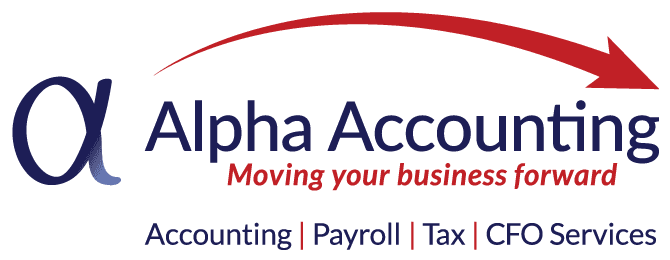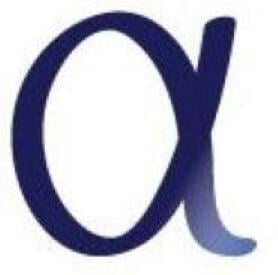Small Business Guide to COVID-19
Resources
CARES Act -- Summary
Congress has approved a bill known as the CARES Act to provide $349 billion in guaranteed loans to small businesses. Here is a link to the bill (known as HR 748) which has been passed into law. There are several programs available to small businesses, here is a brief summary of the notable ones:
(Disclaimer: The following is our interpretation of the CARES Act and should not be considered legal advice. Consult with your advisors prior to making a business decision.)
Economic Injury Disaster Loan (EIDL)
- Apply directly with SBA (no bank involvement)
- Eligibility
- Less than 500 employees
- In business prior to Jan 31, 2020
- Loan amount up to $2m
- No personal guarantees for amounts less than $200,000
- Approval by SBA can be based solely on applicant’s credit score
- Advances – Can receive $10,000 emergency cash advance with forgiveness if used for payroll, increased costs from supply chain disruption (i.e. inventory), mortgage interest, or rents.
Paycheck Protection Program (Section 1102)
- Apply through SBA lending partner (check with your local banker)
- Covered Period is defined as Feb 15, 2020 to June 30, 2020
- Eligibility
- Less than 500 employees
- Sole proprietors, independent contractors, and self-employed included
- Extra relief for Accommodations and Food Services (NAICS Code 72)
- In business prior to Feb 15, 2020
- Loan Amount – Maximum loan amount is lesser of:
- 2.5 x the average total monthly payments for payroll costs incurred during the 1-year period before the date on which the loan is made
- 2.5 x the average total monthly payments for payroll costs incurred during the period beginning on January 1, 2020 and ending on February 29, 2020
- $10,000,000
- Use of proceeds – Allowed uses of the loan:
- Payroll including salaries, commissions, or similar compensation
- Rent
- Utilities
- Interest on any debt incurred before the covered period (Feb 15-June 30, 2020)
- Payments of interest on any mortgage obligations (not principal)
- Group healthcare benefits
- Deferral of payments for at least 6 months but not more than 12 months (not just interest, the entire payment)
- Loan Forgiveness – qualify if funds used to keep “normal” employee levels for 8 weeks following loan origination; must apply for forgiveness with proper documentation; forgivable amount is formula-driven
- Amounts not forgiven have a maximum maturity of 10 years from the date applied for loan forgiveness, interest rates of no more than 4%, and no personal guarantees and no collateral required
Employer Payroll Tax Deferral (Section 2302)
- Ability to defer employer portion of Federal payroll taxes
- 50% owed by Dec 31, 2021
- Remaining amount owed by Dec 31, 2022
Employee Retention Credit for Employers Subject to Closure (Section 2301)
- If your business was forced to close due to COVID-19, then you are eligible for a credit to employment taxes
- Limited to 50% of qualified wages
- Eligibility limited to businesses with “significant decline in gross receipts” in calendar Q1 2020 – defined as 50% of sales from the same quarter in the prior year
CARES Act -- FAQ
What if I have multiple owners?
You still qualify. Every owner with a stake at 20% or greater will need to complete an application (including a personal financial statement Form 413).
What if I’m self-employed?
Yes, sole proprietors, independent contractors, self-employed, and gig economy workers are all eligible.
What if I was not in business 1-year ago?
You still qualify if you were in business prior to Jan 31, 2020 for the EIDL program and prior to Feb 15, 2020 for the Paycheck Protection Program.
What if I’m a non-profit?
Yes, any 501(c)(3) organization qualifies if they remain under 500 employees.
How do I apply?
· For an Economic Injury Disaster Loan (EIDL) – Apply via sba.gov/disaster
· For the Paycheck Protection Program – Apply via your bank or any participating SBA lender
When do I need to apply?
The EIDL program is available as long your business is located in a declared disaster area. You can apply for the Paycheck Protection Program until Jun 30, 2020. Funding is limited for each of these programs, however.
How much can I borrow?
For the Paycheck Protection Program it is determined by a formula based on “payroll costs” only. However, funds can be used for expenses beyond payroll. The maximum loan size is $10,000,000.
For EIDL, borrowing amounts are determined by the SBA.
What constitutes “payroll costs”?
Any payments for salaries, wages, commission, tips, vacation/parental/medical/sick leave, dismissal/separation costs, group health care premiums, retirement benefits, state and local taxes. (Link)
How should I track what I’ve used the funds for?
Opening a new bank account solely for using loan funds would create a clean audit trail when it comes to applying for loan forgiveness.
How does forgiveness work?
The measurement period begins on the date the loan is originated (i.e. funded to you) and continues for 8 weeks. Amounts that can be forgiven include expenses paid for payroll costs, rents, utilities, and interest on mortgage obligations. This requires a bit of hybrid accounting as the borrowing formula and the forgiveness formula are different.
This amount is reduced by:
1. the average # of FTE employees per month during the covered period
{divided by}
2. the average # of FTE employees per month during your choice of…
a. Feb 15, 2019 through Jun 30, 2019; or
b. Jan 1, 2020 through Feb 29, 2020
You’ll need to maintain or increase your FTE count during the covered period if you want loan forgiveness. Also, loan forgiveness is reduced by the amount any individual employee has total salary/wages reduced by 25% or more during the covered period.
Of course, there are caveats and workarounds for rehiring employees or increasing wages back to normal no later than Jun 30, 2020.
How do I apply for forgiveness?
You can apply for forgiveness after an 8-week period following the origination (funding) of your loan. You’ll need to submit documentation to the bank servicing your loan.
Documentation includes verifying the number of FTE employees on payroll and their pay rates for the periods used in determining forgiveness (i.e. during the 8-week period, during Jan 1-Feb 29, 2020, or Feb 15-Jun 30, 2019).
· Payroll tax filings reported to IRS
· State income, payroll, and unemployment insurance filings
· Payment receipts, account transcripts, or other documents verifying payments on covered expenses (rent, lease, utilities, mortgage interest)
· Certification from an authorized representative of the borrower stating that documentation presented is true and correct and the amount of forgiveness requested was used to retain employees, make interest payments on a covered mortgage, make payments on a covered rent, or make covered utility payments.
Is the loan forgiveness taxable?
No. Any amounts forgiven will be excluded from gross income.
Can I apply for both an EIDL and PPP?
No. You cannot borrow funds for the same purposes under these programs.
What if I have small business interruption insurance?
There are limitations to benefits.

